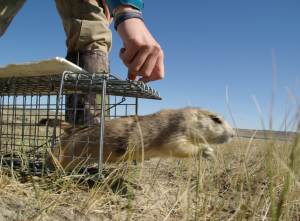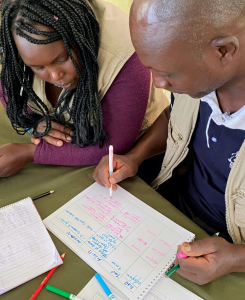What We Must do to Restore Biodiversity
December 5, 2022
By Dr. Clément Lanthier, President & CEO at The Wilder Institute
One out of five assessed native species in Canada faces some degree of threat to their continued viability, and more than 2,000 wild species are at high risk of disappearing completely from the wild. This according to a new report compiled by researchers working for the federal, provincial and territorial governments. The Wild Species 2020 Report is billed as the most complete understanding we have ever had on the status of wild species in Canada. It shows clearly that the need to protect wildlife and restore biodiversity has never been greater.
With COP 15, the UN Conference focused on biodiversity, starting this month in Montreal the world’s attention will turn to which political leaders attend and which ones don’t. But let’s not lose sight of one group that was not invited – species-at-risk of extinction. At the conference, participating countries are expected to emerge with joint declarations and commitments to safeguard ecosystems, setting up targets for conserving land, and territorial waters. We are no longer in a position where we can afford for these declarations to become false promises. We need innovative solutions that can be implemented and evaluated now, not in the years to come.
To safeguard the world’s most at-risk species, conservation must evolve from the ground-up to reflect the realities of each region. The fight against biodiversity loss and climate change requires localized solutions that account for the unique cultural and economic landscapes of each country and community.

At the Wilder Institute, a leading authority on wildlife conservation that operates Canada’s largest conservation breeding and research facility, we’re dedicated to the recovery of species-at-risk to the wild. The Wilder Institute operates on the philosophy that the dramatic action needed to protect biodiversity must consider the needs of all living things, including the one species with the power to curb this crisis – humans. Through the approaches of community conservation and conservation translocations, the Wilder Institute is involved in 18 programs focused on 27 species around the world working with government, academic, industry, and non-profit collaborators to develop and implement solutions that benefit species-at-risk and the human communities around them.
Most of the world’s biological diversity exists in developing nations, where rural communities live alongside endangered species. Empowering local people with resources and expertise to steward natural resources, community conservation focuses on benefiting wildlife and human life in communities around the world. An example of community conservation is the Wilder Institute’s work to protect some of the remaining 120-150 hippos in the West African country of Ghana. The Wilder Institute partners with the Wechiau Community Hippo Sanctuary, the Centre for Biodiversity Conservation Research, and the Wildlife Division of the Forestry Commission of Ghana to protect and monitor hippos and their habitat, while improving livelihoods for the 20 communities within the sanctuary through economic development and employment opportunities.

Collaborative, inclusive approaches to biodiversity can no longer be optional. In fact, it is the keystone to conservation. The work done at The Wilder Institute and other conservation organizations around the world demonstrates that it is possible to bring species-at-risk back from the brink and enrich human lives in the process.
Fighting biodiversity loss and creating economic opportunity for human beings need not be mutually exclusive. Effective action is possible when collaboration is positive, meaningful, and innovative. The fact is we need both kinds of action – top-down commitments from political leaders and grassroots-level work from those on the ground. Governments, academics, corporations, and non-profit organizations all have a role to play in restoring the balance between wildlife and human life. But it’s also up to us as individuals, so we turn the question to you – how are you supporting biodiversity? We all share the same world, it’s time to start advocating for it.
What else is happening in the world of wildlife conservation?
